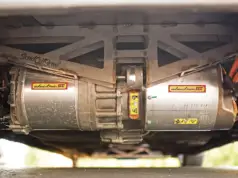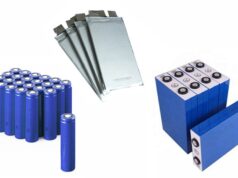Determining the right batteries for your electric vehicle conversion is one of the most important steps in converting a car to electric
Step 1: What helps determines Top Speed?
The process of converting a traditional gasoline-powered vehicle into an electric one involves several important considerations, one of which is the top speed of the vehicle. The top speed of an electric vehicle conversion is primarily determined by the total voltage of the battery pack, with other factors such as gear ratios also playing a role. However, in this article, we will focus on the impact of voltage on top speed.
When Building an EV Battery Pack, the voltage of the battery pack is a key factor to consider. The more batteries that are strung together in series, the higher the voltage, and subsequently, the higher the top speed that the vehicle will be capable of achieving. This is because voltage determines the maximum RPM of the motor, provided that there are enough amps to overcome the load and the physical limitations of the motor are not exceeded. Therefore, it is essential that the voltage is chosen to match the power requirement of the vehicle at the required top speed.
However, it is important to note that different-sized conversions may require different voltages to achieve the same speed. For example, a motorcycle may only need around 72V to get above 60mph, while a typical sedan may require 120V. Therefore, it’s crucial to consider the size and weight of the vehicle when selecting the voltage of the battery pack.
Another important aspect to consider when selecting the voltage of the battery pack is the horsepower of the vehicle. The higher the voltage, the higher the horsepower, as well as the higher the top speed. This means that if you desire a higher top speed, a higher voltage battery pack will be required, which will also increase the overall power of the vehicle. However, it’s important to keep in mind that increasing the voltage also increases the cost of the conversion.
Step 2: Factors that determine Range for your EV Swap?
The Main Factors limiting your max range are Battery Weight, Battery Cost and Battery Space.The range of your conversion is determined by the efficiency (measured in Wh/mile or Wh/km). The total energy stored in your battery pack (measured in kWh). As a general guide, motorbikes will generally use 75-150Wh/mile. Cars may use around 200-400Wh/mile and pick-ups and heavy vehicles around 400-600Wh/mile depending on the weight, rolling resistance, and aerodynamics of the vehicle (also higher voltage systems are generally more efficient than lower voltage and AC systems more than DC).
Since you have already determined the voltage of the pack. The range will determine the Ah rating of your battery pack so that the pack has enough energy, which is the product of voltage and amp-hours (measured in kWh), to travel the required distance.
If we have a round trip commute of 40 miles (65km). We wish to travel in a standard car conversion at 120V, by looking at other conversions we estimate our own will have an efficiency of 250Wh/mile. The product of our efficiency (energy/mile) and our required range (miles) will give us the total energy required for that distance. In our example. The efficiency of 250Wh/mile multiplied by the range of 40 miles gives us total energy of 250×40=10,000W or 10kWh. Since we already determined our voltage was 120V, This means our Ah rating will be the total energy divided by the voltage. In this case 10,000W / 120V = 83.3Ah.
The average efficiency for an average EV conversion. An example is 250Wh/mile x 40 Miles ( desired range ) = 10kWh of energy needed. In our example our battery is 120v. So if we divide the energy needed by the battery voltage we get 83Ah
The pack size needed would be 120V 83ah / 10kw
Medium-Sized Vintage Car Safe Weight Example:
In Order to stay within a safe range of the vehicle’s GVWR or Gross Vehicle Weight Rating for a medium-sized vintage car it would be safe to add roughly 600 pounds of battery weight for your build. Using our formula to calculate battery density by weight x average MI/KWH equaling your expected miles of range.
600 lbs of battery pack weight/13lbs per KWH=46.1 KWH pack
46.1 kWh Pack will give you roughly 138 Miles of Range in a Medium Size Vintage Car
Step 3: Power
Acceleration is a more complex requirement to work out and quantify. One simple way to determine this will be the power-to-weight ratio of your conversion. We have seen above that energy = volts x amp-hours. Power is given by power = volts x amps. It is important to note the distinction between these two formulas. Amp-hours determine the energy and range of the EV, Amps determine the power and acceleration of the EV.
Conclusion:
Once you have completed these four steps the rest of your conversion will be fairly easy. The voltage you picked will determine the voltage of your motor, controller, and charger. The max discharge rate will give you the max amps for the controller.









